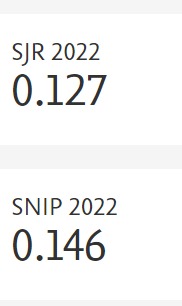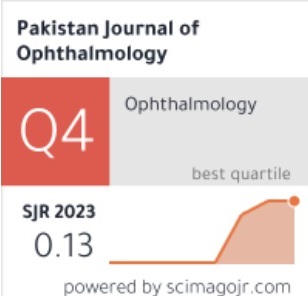Assessment of Visual Acuity by Using Blue and Yellow Light Filters in Amblyopic Eye
Doi: 10.36351/pjo.v39i3.1619
DOI:
https://doi.org/10.36351/pjo.v39i3.1619Abstract
Purpose: To assess and compare the effect of blue and yellow filters on visual acuity in amblyopes.
Design of Study: Comparative cross-sectional study.
Place and Duration of Study: Ophthalmology Department of Madinah Teaching Hospital, Faisalabad from November 2018 to May 2019.
Methods: Participants (n꞊30) of age 7 to 28 years were studied. All types of amblyopia were included and subjects with systemic or ocular diseases were excluded. After history taking, ophthalmoscopy, visual acuity was measured with and without pinhole in the amblyopic eye. Visual acuity was also recorded by using blue and yellow filter with and without pinhole by placing in front of amblyopic eyes to assess the difference in visual acuity with filters and with pinhole. Comparative analysis of changes in visual acuity in amblyopic eye with and without blue filter, with and without yellow filters and with blue and yellow filters were performed by Paired sample T-test for qualitative variable (visual acuity) by using SPSS 20.
Results: Visual acuity in amblyopic eye without filter (mean꞊0.52 ± .28) was lower than with blue (mean 0.31 ± .26) and yellow filters (mean 0.46 ± .30) and visual acuity with blue filter was higher than with yellow filter with the incorporation of Pinhole (P.H). The probability value of blue filters was (P = 0.00) and with yellow filters (P = 0.001) at the level of 5% of confidence interval. Participants feel more clarity, sharpness with blue filters but more comfort with yellow filters.
Conclusion: Visual acuity of amblyopes was significantly improved with blue filters as compared to yellow filter.
Downloads
Published
How to Cite
Issue
Section
License
Copyright (c) 2023 Anam Majeed Majeed, Fazilat, Hafsa, Iqra, Fatima

This work is licensed under a Creative Commons Attribution-NonCommercial 4.0 International License.






